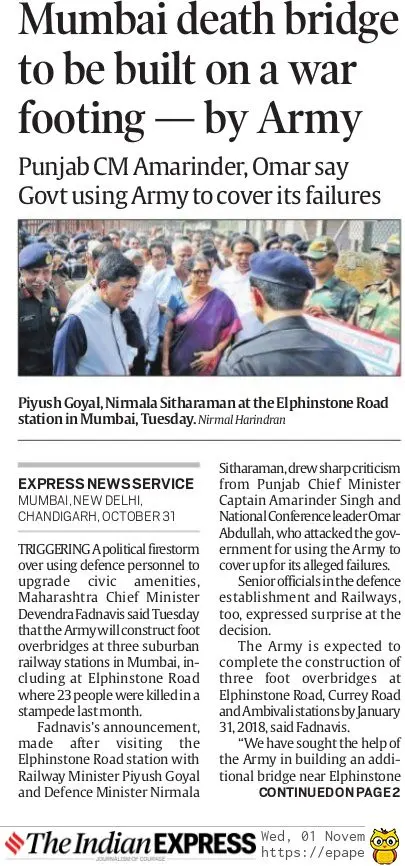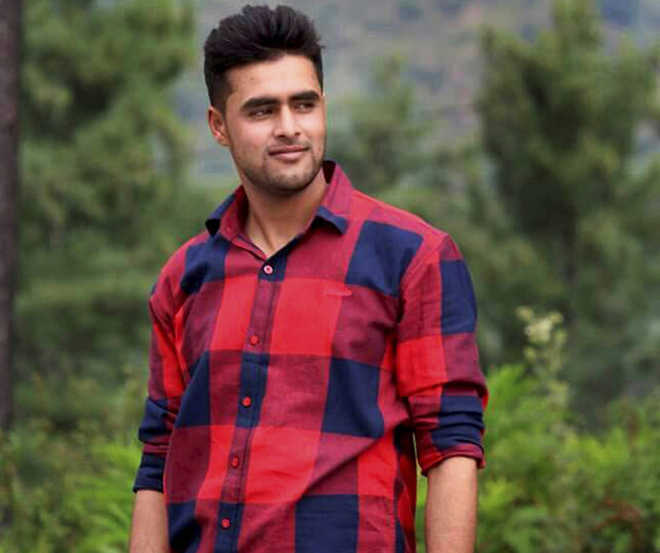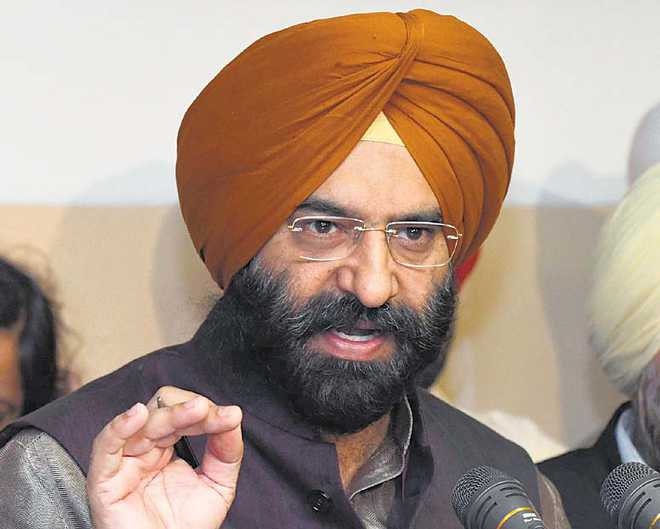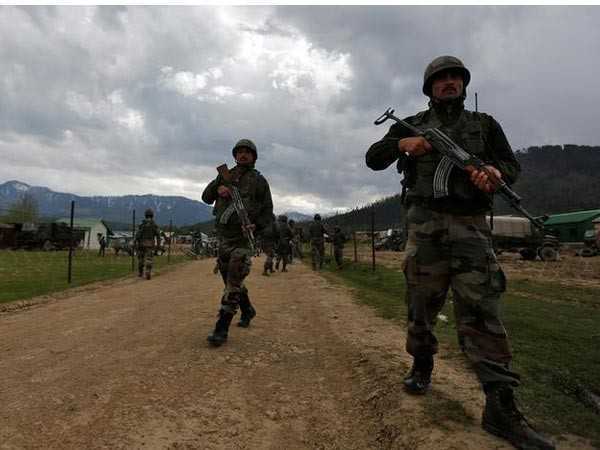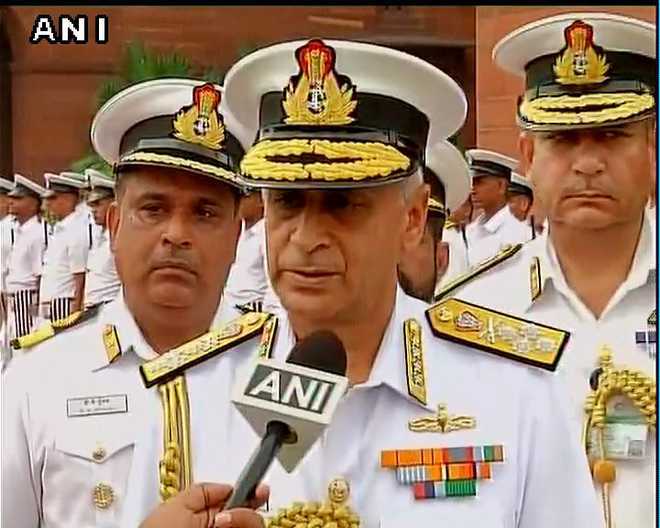BEST FOOT FORWARD The Mai Bhago Armed Forces Preparatory Institute for Girls makes officers out of candidates from the hinterland of Punjab. All it needs from the girls is a raw passion
If applicants are not passionate about the forces, we don’t consider them even if they have good academic record. The institute is doing its best to make the girls emerge stronger. MAJ GEN IP SINGH, (retd)

MOHALI: Navjot Kaur, 21, from Sidhwan village in Gurdaspur, has dreamt of joining the army ever since her childhood when she used to tie rakhi on the wrists of soldiers in the cantonment nearby. Navjot says, “I was so impressed by their uniform and demeanour that I decided that one day I too would join the armed forces.” Today, the Mai Bhago Armed Forces Preparatory Institute for Girls is giving wings to her dreams.

The institute director, Maj Gen IP Singh, VSM (retd), says it was former Punjab chief minister Parkash Singh Badal’s visit to the Indian Military Academy about eight years ago, that laid the grounds for both Maharaja Ranjit Singh Armed Forces Preparatory Institute (AFPI) and Mai Bhago Armed Forces Preparatory Institute in Mohali.
He recounts, “When Badal found that of the 400 cadets in the IMA, only six were from Punjab, he felt the need to arrest the trend and provide a platform for training students. This led to the birth of Maharaja Ranjit Singh Armed Forces Preparatory Institute (AFPI) for boys.”
Spurred by the success of Maharaja Ranjit Singh institute, they looked at a similar option for women, and construction of Mai Bhago institute began in 2014.
OFFICERS UNDER TRAINING
Today it is home to 75 girls, most of whom are from rural background. Daughters of farmers, teachers and traders, they are all united by their love for the armed forces. Singh says they disregard applicants with good academic record, if they are not passionate about the forces.
The girls are still under training and the first batch will take the Combined Defence Services written exam on November 19. As many as 23 girls appeared in the Air Force Common Admission Test on August 27 out of whom eight have made the cut.
Singh says the institute is doing its best to make the girls emerge stronger. Tavleen Kaur from Bhumbli village in Gurdaspur, will vouch for it. An Air Force aspirant, whose father is a teacher, she says, “I was not very confident when I came to the institute in 2015, but now there is a complete change in me. I have emerged a more confident and mature person. I am physically and mentally stronger. Our schedule is such that it completely transforms you.”
Echoing her sentiments, Sonali Rana from Kapurthala said, “The disciplined schedule and holistic development have helped me emerge as a more confident person.”
The only girl in her class at Sainik School, Kapurthala, Rana now wants to inspire other Sainik school girl students to join the armed forces.
Sukhpreet Thind, assistant director of the institute, says the girls are addressed as cadets from the day they join the institute. “We make them feel they are part of the armed forces. We focus on their overall development. They are taught team building skills, communication and leadership. We also keep an eye on their medical fitness to ensure that they perform well in physical fitness tests as well,” she added.
THE INSTITUTE
Named after Mai Bhago, the famous Sikh saint warrior, and set up on 8.85 acres in Sector 66, the institute was inaugurated by former defence minister Manohar Parrikar, on 25 July 2015.
Mai Bhago had led the Sikh soldiers against the Mughals in 1705. She killed several enemy soldiers on the battlefield, and is considered to be a saint by the community.
The institute director recalls how the land allotted for the institute was a vast pit in the Industrial Area. The entire construction was done on columns.
In a bid to keep the environment surcharged with the martial spirit, the institute organises various intellectual, fitness and cultural activities. Even the names of buildings are inspirational: the auditorium is named after the Khidrana battle, the amphitheatre on the Saragarhi battle and a hall is christened after Mata Khivi, another woman warrior.
Besides 78 hostel rooms, the institute provides facilities such as a multi gym and sports fields, et al. The Sohana hospital and a local doctor take care of its medical needs, while the training for written examination is outsourced to another agency in Sector 37.
WHY MOHALI
The director said it was considered vital for an institution of this type to be close to some cantonment. Mohali fitted the bill.
Besides, considered the academic hub of Punjab with universities and educational institutes, it was already home to a similar armed forces preparatory institute for men.
FUTURE PLANS
The institute aims to enhance its training capacity so that it can prepare girls for entry to the armed forces technical stream. Graduation is the starting point for girls seeking commission into the armed forces. More than 3/4th vacancies in the army are technical (engineers, air defense, signals and electrical mechanical engineers) and there are only 12 nontechnical entries out of 48 every six months. There are four additional vacancies for NCC.
CRITERIA
A candidate desirous of entering this institute should be 16 years or more on 1 July of the year of admission; and should have cleared Class 12 with Punjab domicile. This is followed by a written test, interview and a medical test.

MAI BHAGO ARMED FORCES PREPARATORY INSTITUTE
Mai Bhago Armed Forces Preparatory Institute for Girls has been set up by Punjab government as an exclusive all girls training Institute. It is a unique, first of its kind initiative in the country for the girl child. The Institute provides a lifetime golden opportunity to 10 plus 2 level girls from Punjab to choose an elite career as a Commissioned Officer in the Defence Services. The Institute, named after Mai Bhago Ji, the famous Sikh saint warrior, is laid out on a sprawling 8 acres beautifully landscaped area in Sector 66, SAS Nagar. Hon’ble Raksha Mantri, Sh Manohar Parrikar, inaugurated the Institute with its first batch of 25 Lady Cadets on 25 Jul 2015.
The Institute is fully residential and has all the modern facilities to include multi gym, swimming, shooting, sports fields, walking plaza etc. The training includes three years graduation in MCM DAV College Sector 36, Chandigarh; Sports and Physical Fitness, Personality Development, Communication Skills, Grooming, Extra Curricular Activities, NCC, Professional Training and preparation for SSB Interview. At the end of three years the Lady Cadets are made to appear in the competitive examination to seek admission into the officer Training Academies based on different Women Entry Schemes for commission in
 Mai Bhago ji (Mata Bhag Kaur)
Mai Bhago ji (Mata Bhag Kaur)For over 300 years now, Mai Bhago Ji (Mata Bhag Kaur) is remembered by the Sikhs as a “Saint Warrior”. She valiantly led 40 Sikh warriors against the Mughals in the famous Battle of Mukatsar on 29 Dec 1705 becoming the first women in the history of Punjab, to fight on a battlefield. Wearing Khalsa uniform and a Keski around her head she led from the front and killed several enemy soldiers. Being vastly outnumbered all 40 Sikhs attained martyrdom. Though injured, Mai Bhago was the sole survivor in this battle.Born at village Jhabaal Kalan in Amritsar district of Punjab, Mai Bhago was the daughter of Bhai Mallo Shah who had become a Sikh during the time of Guru Arjan Dev Ji. She was a staunch Sikh by birth and upbringing. She was married to Nidhan Singh Warraich of Patti.
In 1705, she was profusely distressed to learn that some Sikhs of the region had deserted Guru Gobind Singh Ji under adverse battle conditions at Anandpur Sahib. These Sikhs, forty in number gave Guruji a “Bedava” (written abnegation of allegiance and dis-avowing Him as the Guru or be His Sikhs) and left Him to fend for Himself. Mai Bhago reprimanded them for their disgraceful act after which these forty Sikhs were ruefully repentant. Mai Bhago set off along with them to find the Guru; seek His forgiveness and blessings for them to be reinstated as Khalsa.
Even before they could meet the Guruji they were forced to stop at Khidrana da Dhab (Pool of Khidrana) since the Mughal Army was closing in to attack the Guruji who was also around that area at that time. These forty Sikhs under Mai Bhago considered this a fateful chance to redeem themselves. Wading headlong into a 10,000 strong Mughal Army the brave Forty inflicted such damage that enemy was forced to retreat.
The Guru had watched the battle from a nearby hill and with deadly accuracy had rained down a flurry of arrows on the Mughal fighters during the attack. Seeing little activity among the party that had come to his aid He rode to the battlefield Himself. In the battlefield the Guru was deeply touched by the valour and devotion of the same forty who had dis-avowed him as their Guru. All of them had died of their wounds except one, Mahan Singh Brar, who was mortally wounded and had just enough time to look up at Guru Gobind Singh and seek forgiveness for all the forty. The Guru pulled him upright with his arms into his lap, tore-up the ‘Bedawa’ and blessed the forty men as the ‘Chaali Muktey’ the ‘Forty Liberated Ones’.
Mai Bhago Ji who herself was grievously injured, stayed on with Guru Gobind Singh Ji after recovering and served as one of His bodyguards, in a warrior’s attire. She was one of many Sikhs who accompanied the Guru on his journey to Nanded. After the Guru shed hid mortal self at Nanded in 1708, she retired down at Jinwara 11 km from Bidar in Karnatka where, immersed in meditation, she lived to attain a ripe old age. Her hut in Jinwara has now been converted into ‘Gurudwara Tap Asthan Mai Bhago Ji’. At Nanded too, a hall within the compound of ‘Takht Sachkhand Sri Hazoor Sahib’ marking the site of her residence is known as ‘Bunga Mai Bhago Ji’.
to the Defence Services.








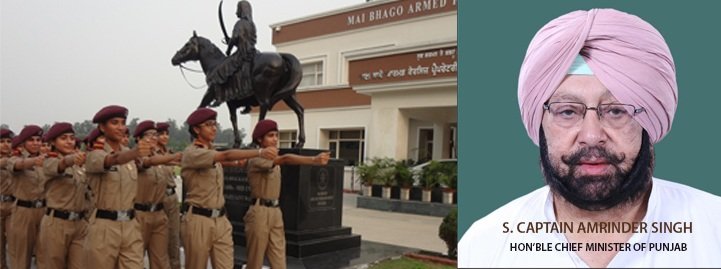
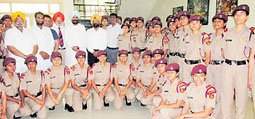





 HT FILE
HT FILE